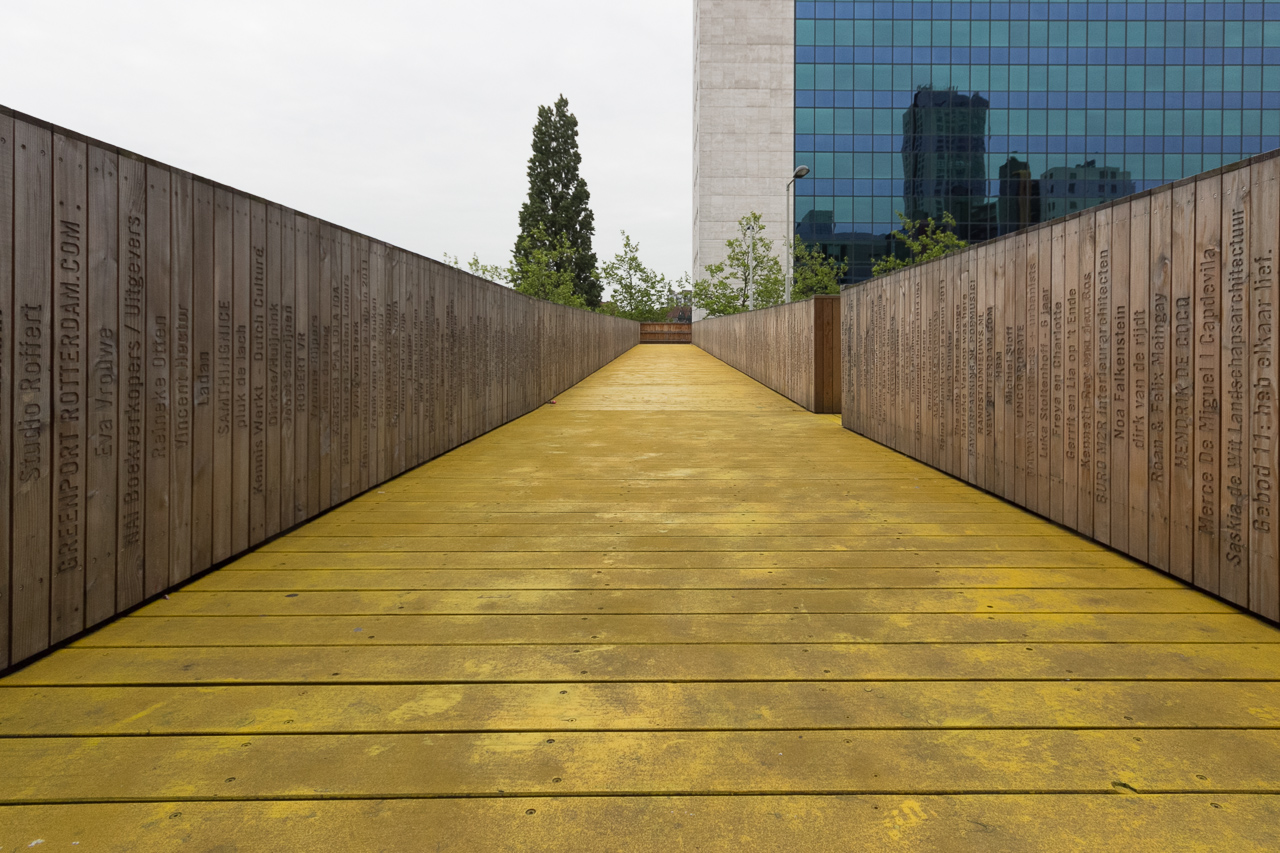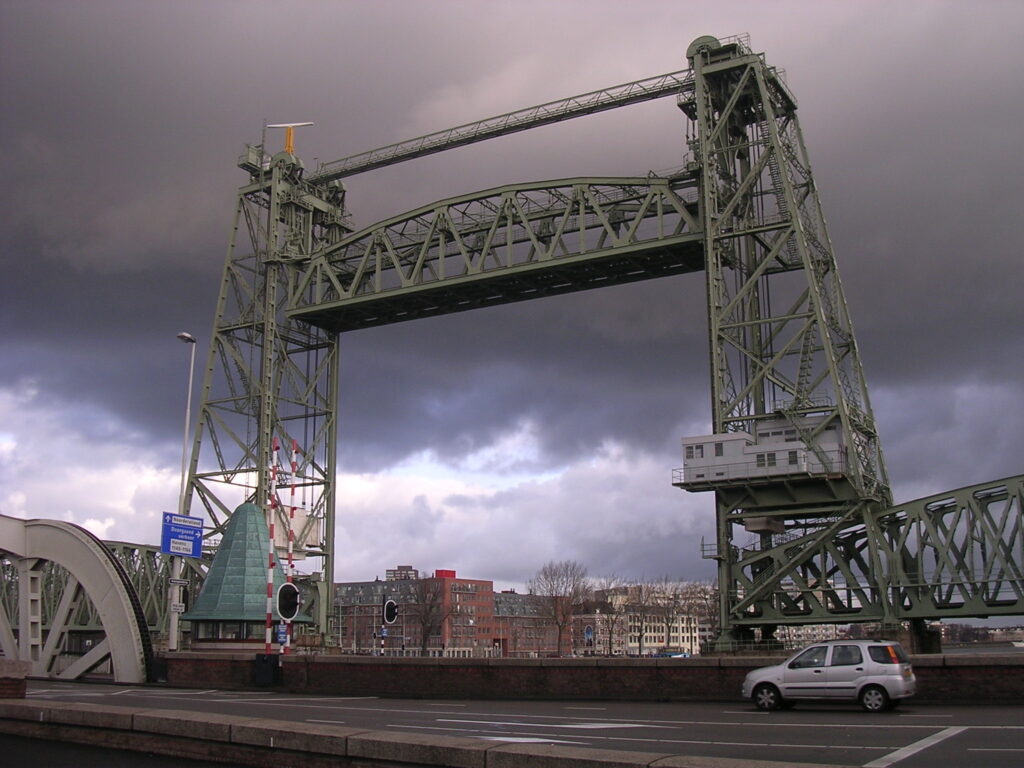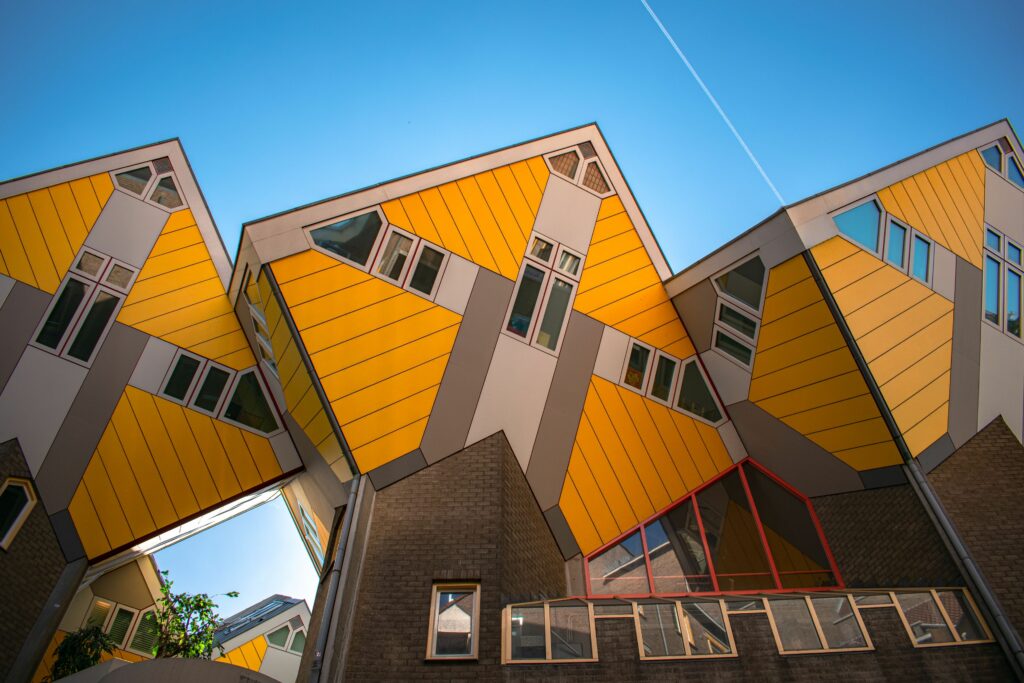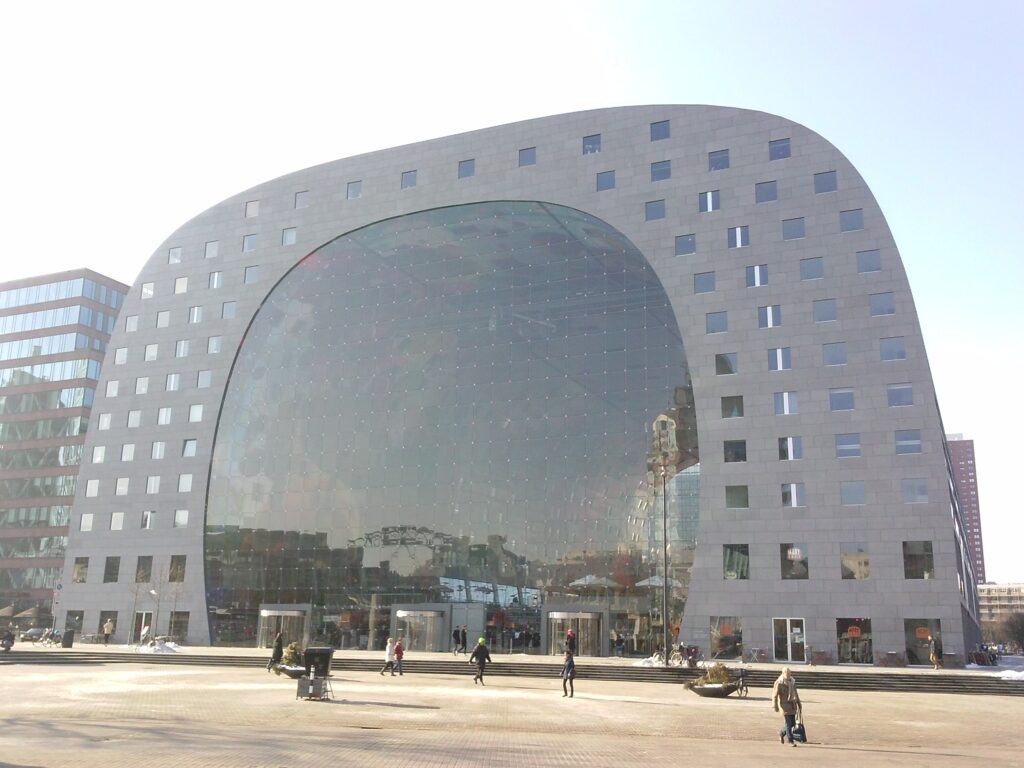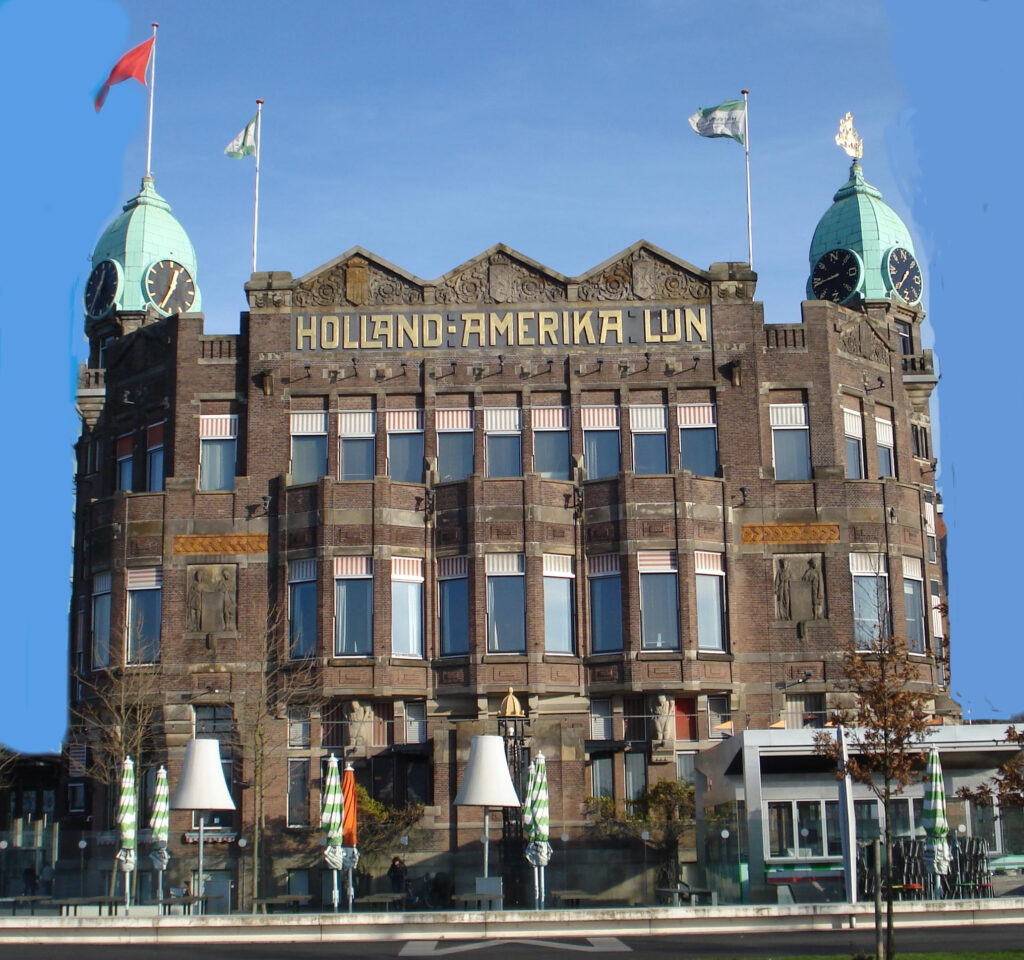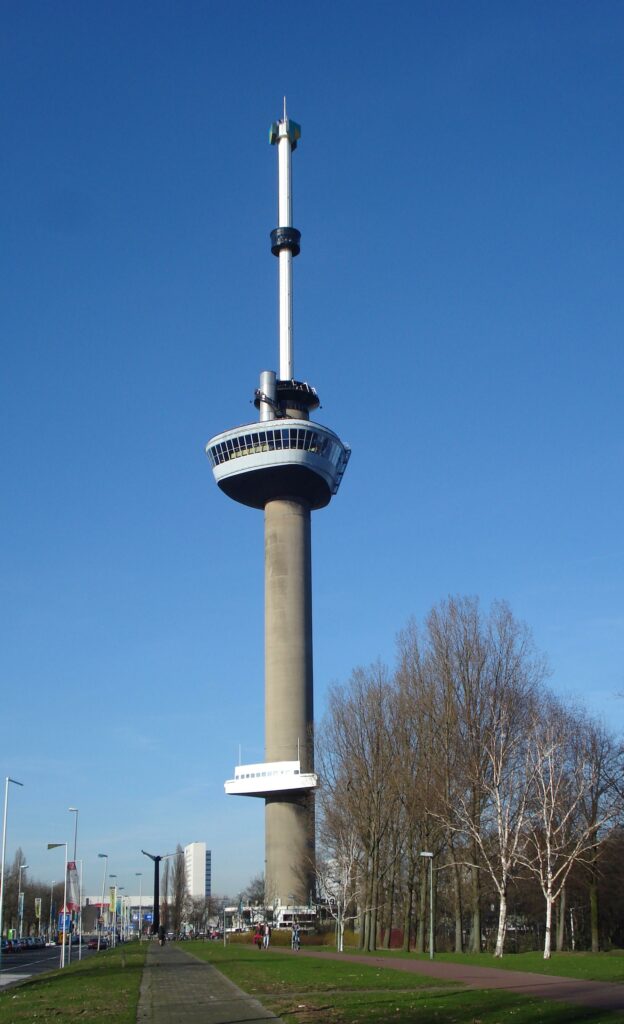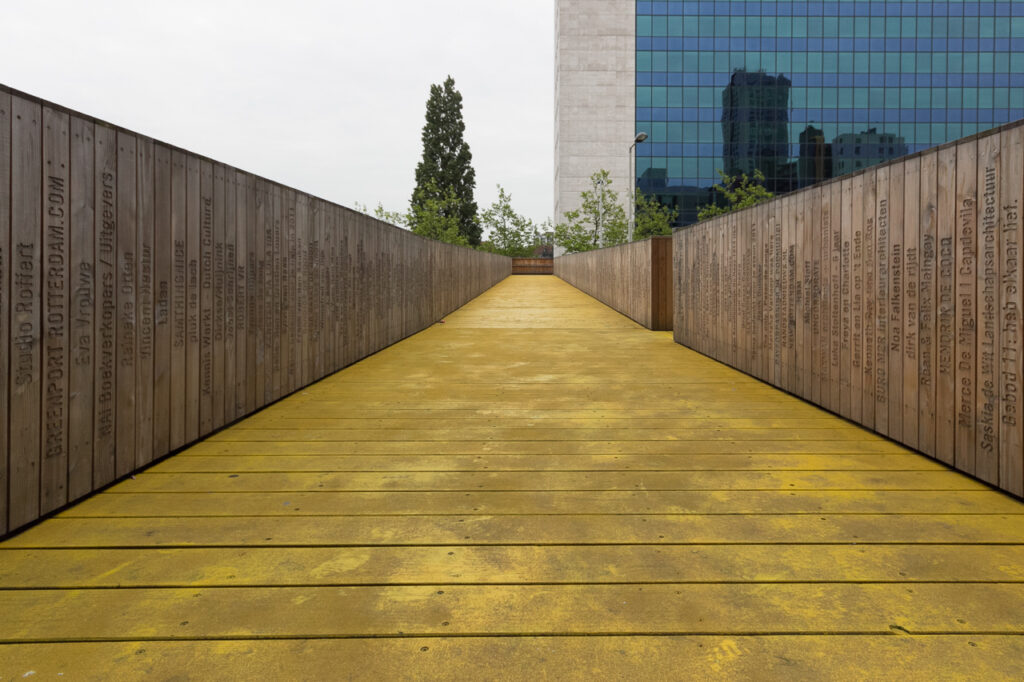
The Luchtsingel, an iconic footbridge in Rotterdam, has left its mark on the city’s urban planning by connecting several formerly separate neighborhoods. Designed as a participatory project and partially funded by crowdfunding, this wooden structure quickly attracted attention. However, deterioration issues led to its gradual closure and eventual demolition in 2024. A look back at the history of this unique urban footbridge.
Galerie photos
An ambitious participatory project
In 2011, the city of Rotterdam launched a competition aimed at revitalizing urban space and improving residents’ quality of life. The architectural firm ZUS won the project with its innovative idea for the Luchtsingel, a wooden pedestrian bridge connecting several previously isolated neighborhoods.
With 20,000 votes, or 48 % of the total, the project received €4 million in municipal funding. A crowdfunding campaign also raised €100,000 through the sale of planks bearing the names of contributors, at a price of €25 each. The initial budget for the bridge was €1.3 million, but the final cost reached €2.5 million. The Luchtsingel was officially inaugurated in 2015.
A structure facing challenges
Since its opening, the footbridge has faced several maintenance issues. Complaints about damage, graffiti, and even the presence of urine and feces have multiplied. To maintain its appearance, the city has had to repaint the structure yellow every two weeks, generating an annual cost of $75,000.
In 2022, inspections revealed problems with wood rot and subsidence, making some sections unsafe. In May of that year, several parts of the footbridge were closed for repairs, with a reopening scheduled for September 2022.
The end of the Luchtsingel
Despite attempts at restoration, the advanced deterioration of the structure led the municipality to decide to demolish it. In October 2024, dismantling work began, with completion scheduled for the end of the year.
An urban legacy
Although the Luchtsingel will disappear from the Rotterdam landscape, it will remain a symbol of urban renewal and citizen participation in the development of public spaces. This project demonstrated the importance of involving residents in the transformation of their city, despite the challenges posed by the maintenance of wooden infrastructure in a demanding urban environment.
